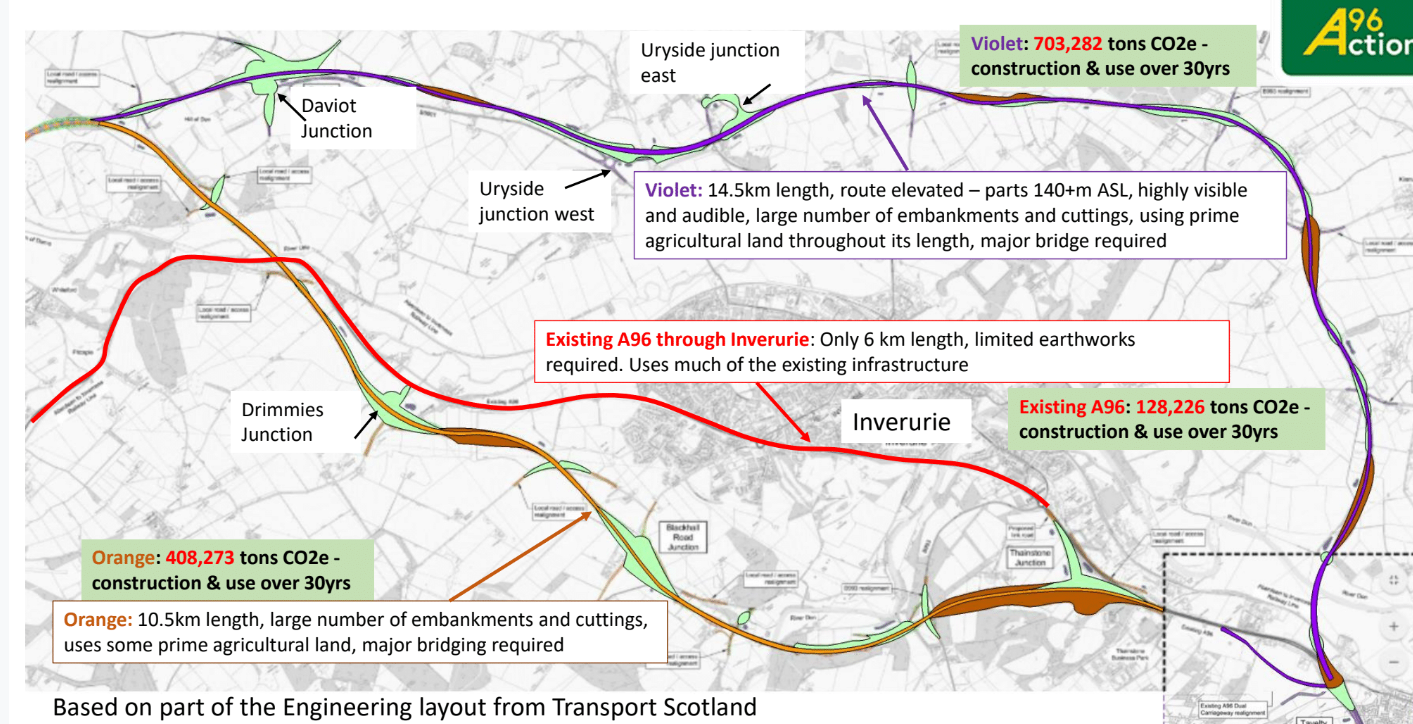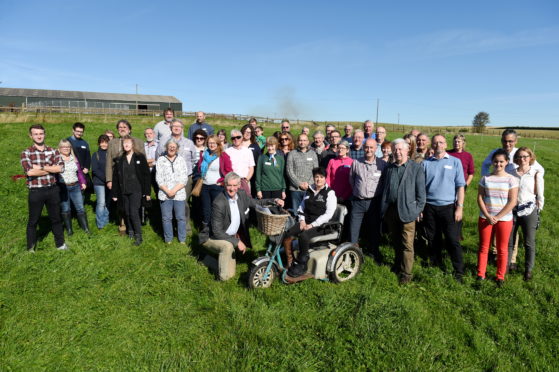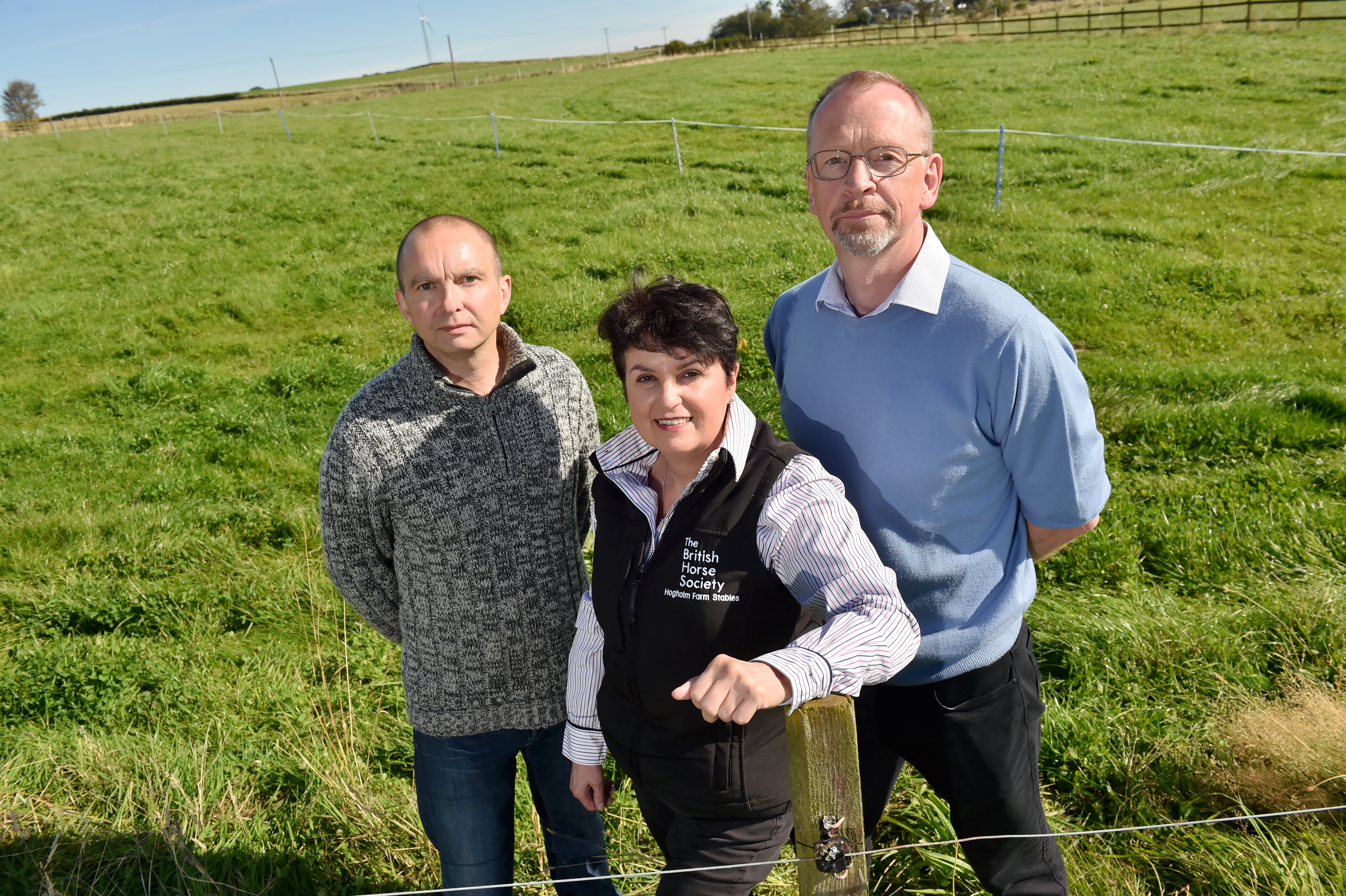Campaigners have unveiled their own vision of how a major north-east road could be dualled – arguing it is cheaper and more eco-friendly.
Several routes for the A96 Aberdeen to Inverness dualling project are under consideration by Transport Scotland.
Campaign group A96 Action believe the road should be upgraded along its existing route at Inverurie, but transport bosses have already ruled that out.
Now the group has unveiled a new road design which reflects their own vision for the project and urged Transport Secretary Michael Matheson to take them seriously.
Updating the current A96 stretch would, they claim, be better for the environment and could be implemented “at considerably lower cost and capable of being constructed far more quickly than the currently proposed routes.”

Chairwoman Lorna Anderson said yesterday: “We came together for a number of reasons, but what we have in common is a deep love of this unspoiled part of Aberdeenshire and pride in its history, its natural heritage, and its special sense of place.
“But we also care about the future and the world we create for future generations, recognising that the environment is under threat as never before.
“Our position has been from the start that online dualling using the existing A96 corridor at Inverurie is viable and as deselected too early on grounds that we believed were highly flawed.
“This option makes the best economic, environmental and common sense and we call on the transport secretary to ensure that this option is back on the table.”
Earlier in the week, the design drawings were presented to Mr Matheson at Holyrood.
North East Conservative MSP Peter Chapman, who organised the meeting, said: “He was responsive to the well-considered, powerful arguments the members made around the table.
“They have consistently made the case for using the existing road as the cheapest, most environmentally sustainable way of dualling the A96.”
North-east Labour MSP Lewis Macdonald added that upgrading the existing A96 route would be more cost effective and have less of an environmental impact.
He added: “It is beyond belief that the Scottish Government would make such an important decision about such a significant infrastructure project without seeking the views of the A96 environmental steering group and its member organisations.
“This is especially important because of the concerns local people have expressed regarding the impact the remaining routes will have on the local environment, including threatened species like the curlew.”

Last night, Mr Matheson said: “As part of the development and assessment of initial route options for the A96 dualling east of Huntly to Aberdeen scheme, Transport Scotland and its consultant, AmeyArup Joint Venture, have consulted with statutory bodies including Historic Environment Scotland.
“Consultation does not focus on specific route option choices, but helps inform the design manual for roads and bridges route options assessment process and consequent selection of route options by identifying environmental sensitivities and potential environmental impacts across the scheme, and informs how these impacts could be reduced through design development and mitigation.”
A Transport Scotland spokesman said: “The design work for the challenging east of Huntly to Aberdeen scheme is well under way.
“Having let local residents see and comment on the initial options last October, we held further engagement events in May for the remaining options being taken forward to the next stage of design and over 1,300 people took the opportunity to come along and view the material with approximately 800 written responses received.
“All feedback received is vital, including that from the A96 Action Group, and will be taken into consideration as we look to identify a preferred option for the scheme


